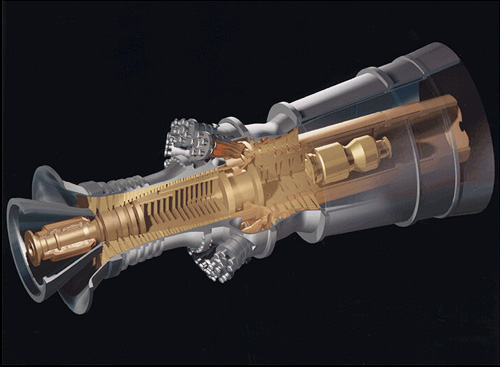GE H series power generation gas turbine. This 480-megawatt unit has a rated thermal efficiency of 60% in combined cycle configurations.
The construction process for gas turbines can take as little as several weeks to a few months, compared to years for base load power plants.[citation needed] Their other main advantage is the ability to be turned on and off within minutes, supplying power during peak demand. Because they are less efficient than combined cycle plants, they are usually used as peaking power plants, which operate anywhere from several hours per day to a few dozen hours per year, depending on the electricity demand and the generating capacity of the region. In areas with a shortage of base load and load following power plant capacity, a gas turbine power plant may regularly operate during most hours of the day and even into the evening. A typical large single-cycle gas turbine may produce 100 to 300 megawatts of power and have 35–40% thermal efficiency.
The most efficient single-cycle turbines have reached 40% efficiency. "Combined-cycle power plants, in which exhaust heat from a gas turbine driving an electrical generator is used to make steam to power a separate [steam] turbine driving yet another electrical generator, can see efficiencies as high as 58 percent."

No comments:
Post a Comment